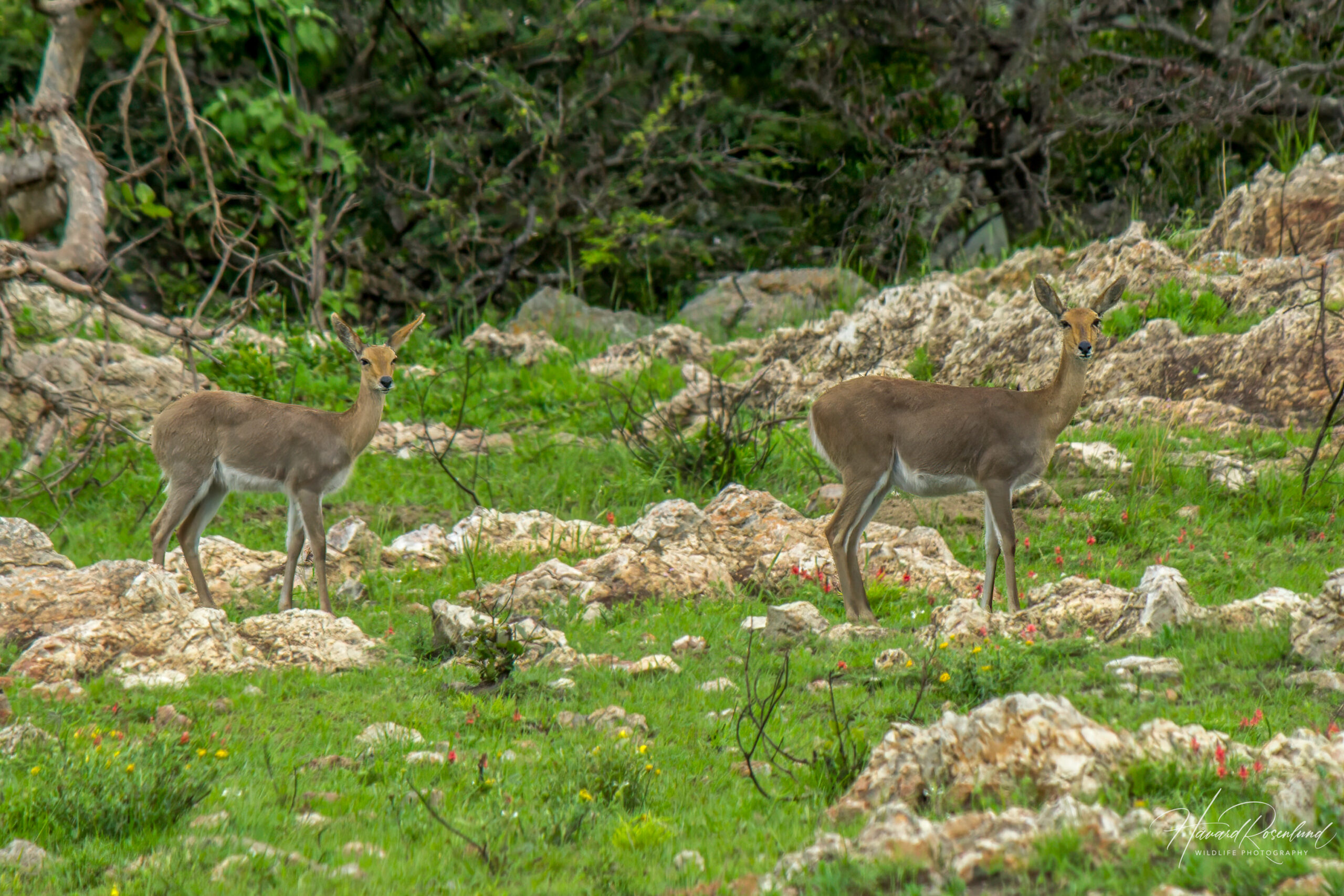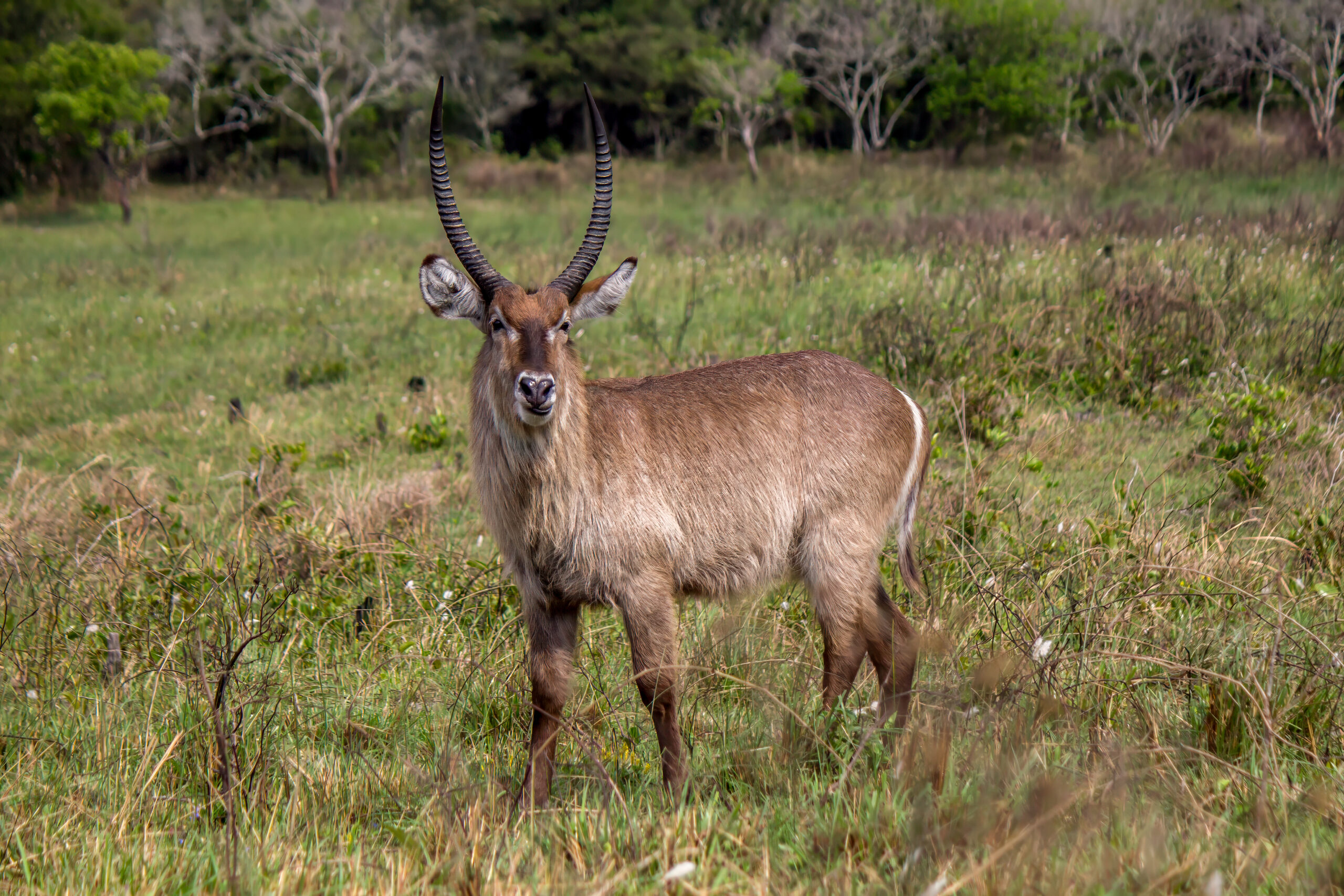Description
The mountain reedbuck (Redunca fulvorufula) is the smallest species of reedbuck. Adults reach an average shoulder height of 75 cm (2 ft 5.5 in) and a weight of 30 kg (66 lb). Males are larger than females. Coloration is grey to greyish brown. It has forward pointing horns and a black glandular patch beneath the ears, just like the other reedbucks. It is much smaller than the similar southern reedbuck (Redunca arundinum). It has shorter legs, and the horns are much shorter on the male. The white on the tail is often more prominent and fluffier.
Diet & habitat
As the name implies, the mountain reedbuck prefers mountainous terrain. It is found in mountain forests, steep hills, and grasslands on higher elevations. It is typically found on elevations between 1,400-2,000 m (4,600-6500 ft). It has been recorded as high up as 5,000 m (16,400 ft). It is a diurnal grazer, which means it is mostly active during the day and feeds mainly on grass. Foraging is typically done early in the morning and late in the evening. The hottest hour of the day is spent resting in the shade. It is also highly dependent on water.
Social behavior
The mountain reedbuck lives in small unstable groups of 3-8 individuals (sometimes 12), which consists of females and their young. These groups have their own home ranges, which include several small male territories. A male is generally solitary but will temporarily join up with groups of females when they pass through his area. The males use vocalization and posturing to keep other males away and to maintain boundaries. Young males form bachelor groups until they are old enough to fight for their own territory.

Female mountain reedbuck with young @ Munyawana Game Reserve.
Reproduction
Breeding can occur year-round if conditions are favorable. In South Africa most births take place in November-December, which coincides with the early summer rains. In East Africa most births take place during the rainy season of March to May. One young is born after a gestation period of 8 months. Newborn stay hidden in dense vegetation for one month. Females reach sexual maturity already after 9-12 months but will not be fully mature until they are 18-24 months old. Males become fully mature when they are around 27 months old. Lifespan is approximately 14 years in captivity.
Subspecies
There are three subspecies of mountain reedbuck. These are found in three separate geographical locations in sub-Saharan Africa. The southern mountain reedbuck (R. f. fulvorufula) is found mainly in South Africa, the Chanler’s mountain reedbuck (R. f. chanleri) is found in East Africa, and the western mountain reedbuck (R. f. adamauae) is found in Cameroon and Nigeria. There are slight color variations and differences in horn lengths between the subspecies.
Status
It is believed to be around 16,000 mountain reedbucks left in the wild. The southern mountain reedbuck takes up most of the population with an estimated 13,000 individuals. The Chanler’s mountain reedbuck, found in East Africa, has an estimated population of 2,100 individuals and it is listed as vulnerable on the IUCN Red List. The western mountain reedbuck, found in Central Africa, is the least numerous with only 1000 individuals and it is listed as endangered. Mountain reedbuck as one species is listed as endangered on the IUCN Red List, and all subspecies are in decline. Main threats are degradation of habitat and competition from domestic animals. Human population growth and hunting are also threats to the smaller populations.






